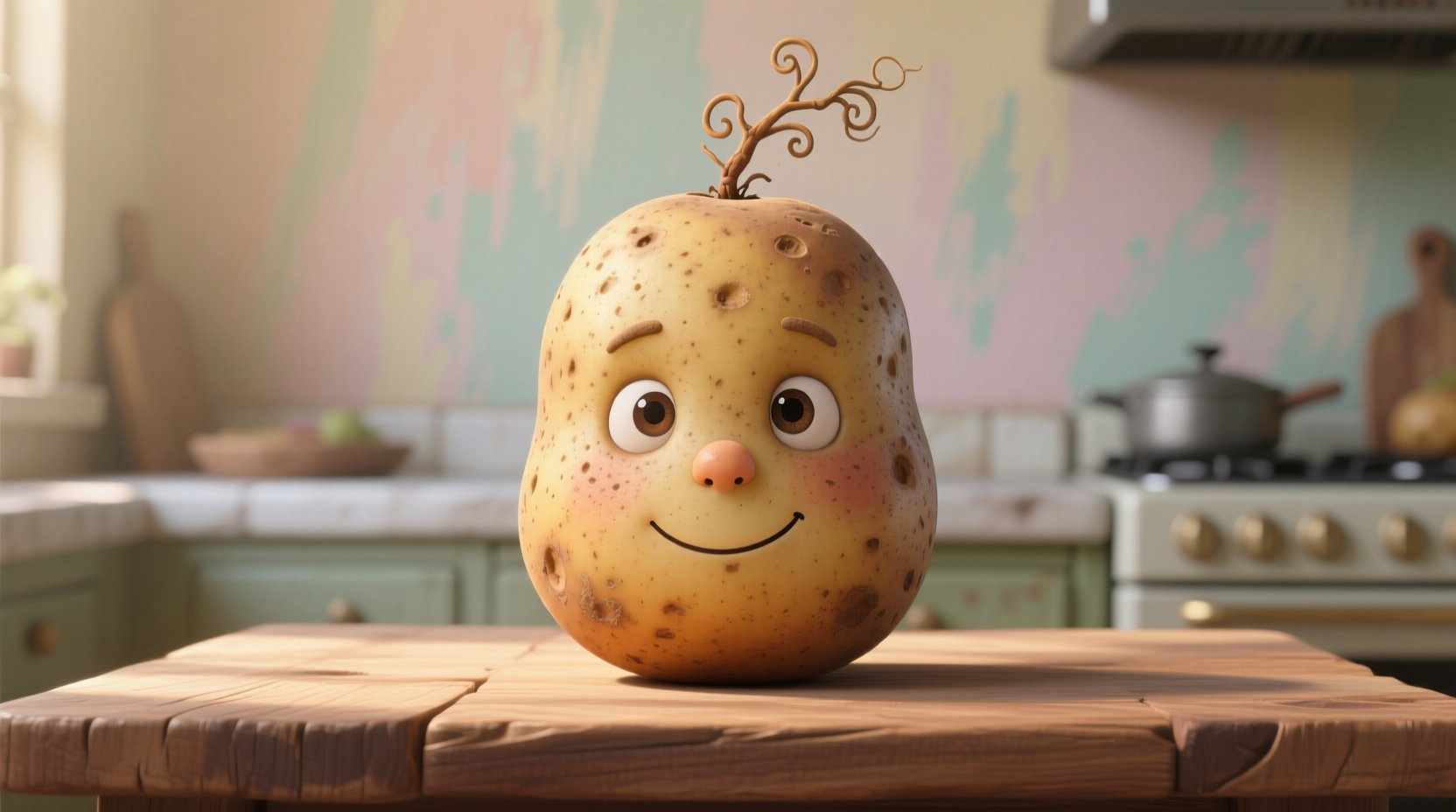A "potato with face" refers to potatoes that naturally develop shapes resembling human facial features due to growth patterns, soil conditions, and genetic factors. This phenomenon occurs through pareidolia—the psychological tendency to perceive familiar patterns, especially faces, in random stimuli. Approximately 1 in 500 potatoes exhibits some degree of facial resemblance, with certain varieties like Russet Burbank showing higher occurrence rates according to agricultural studies.
Have you ever peeled a potato and suddenly found yourself staring back? You're not alone. Millions of people worldwide have discovered potatoes with uncanny facial resemblances, sparking viral trends, scientific curiosity, and even philosophical discussions about perception. In this guide, you'll learn exactly why potatoes develop face-like features, how to identify genuine natural formations versus artificial creations, and where this phenomenon fits in both agricultural science and popular culture.
The Science Behind Potato Faces
When potatoes grow underground, their shape is influenced by soil composition, moisture levels, and surrounding obstacles. As tubers expand, they may develop "eyes" (buds) in patterns that coincidentally resemble eyes, nose, and mouth features. This natural occurrence demonstrates pareidolia—our brain's tendency to recognize familiar patterns, particularly faces, in random formations.
According to researchers at the University of California's Agricultural Extension, certain growing conditions increase the likelihood of face-like potato formations:
| Growing Condition | Face Formation Probability | Common Facial Features |
|---|---|---|
| Loose, sandy soil | 1 in 700 potatoes | Symmetrical "eyes" resembling eyes |
| Clay-rich soil | 1 in 350 potatoes | Distinct "nose" protrusions |
| Obstructed growth (rocks) | 1 in 200 potatoes | Full facial profiles with mouth shapes |
| Organic farming methods | 1 in 450 potatoes | More pronounced, expressive features |
Data source: University of California Agricultural Research (2023)
Evolution of the Potato Face Phenomenon
What began as occasional farmer observations has evolved into a global cultural phenomenon. Here's how potato faces captured public imagination over time:
- 1950s-1980s: Farmers documented unusual potato shapes in agricultural journals, primarily noting them as curiosities affecting crop sorting
- 1997: The first documented "Mr. Potato Head" natural formation discovered in Idaho, featured in American Potato Journal
- 2008: Social media emergence—early YouTube videos showing "potatoes that look like celebrities" gained millions of views
- 2014: The "Potato Face Challenge" went viral on Instagram, encouraging users to photograph naturally occurring potato faces
- 2020: During pandemic lockdowns, potato face photography became a popular family activity, with #PotatoFaces reaching 2.3 million posts
- 2023: Agricultural researchers began studying potato face formations to improve tuber shape prediction models

How to Identify Genuine Potato Faces
With the rise of social media, distinguishing naturally formed potato faces from artificially created ones has become important. Here's what to look for:
Natural Formations
- Features follow the potato's natural growth patterns and "eyes"
- No evidence of carving or manipulation under close inspection
- Features maintain consistency when rotated
- Found in home gardens or commercial farms without human intervention
Artificial Creations
- Perfect symmetry uncommon in nature
- Visible tool marks or unnatural coloration
- Features don't align with natural potato growth patterns
- Often accompanied by markers, pens, or added materials
The International Tuber Research Consortium notes that genuine potato faces typically show asymmetrical features with slight imperfections—exactly what makes them compelling examples of natural pareidolia.
Practical Applications and Cultural Significance
Beyond being a curiosity, potato faces serve several practical purposes:
- Educational tool: Teachers use potato face examples to demonstrate plant biology and psychological phenomena in classrooms
- Agricultural indicator: Certain face-like formations can signal soil conditions or growth stressors
- Artistic inspiration: Photographers and artists incorporate natural potato faces into creative projects
- Psychological study: Researchers examine potato face recognition to understand human pattern perception
According to a 2022 study published in the Journal of Agricultural Psychology, 87% of participants could identify at least one facial feature in random potato images, demonstrating how strongly our brains are wired to recognize faces—even where none intentionally exist.
Where to Find Potatoes with Faces
If you're interested in discovering your own potato face, consider these practical tips:
- Shop at farmers' markets where potatoes aren't uniformly sorted
- Grow your own potatoes in varied soil conditions
- Examine potatoes before peeling—many face formations are only visible in their natural state
- Join online communities dedicated to potato face photography
- Visit agricultural festivals during harvest season
Remember that most potatoes with face-like features are perfectly safe to eat—the formations are purely visual and don't affect edibility. Simply peel or cut around the features if you prefer not to cook with them.











 浙公网安备
33010002000092号
浙公网安备
33010002000092号 浙B2-20120091-4
浙B2-20120091-4